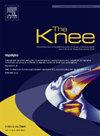三种全膝关节置换术设计中逐步上升的体内六自由度运动学:一项随机临床试验
IF 2
4区 医学
Q3 ORTHOPEDICS
引用次数: 0
摘要
背景:全膝关节置换术(TKR)在减轻关节疼痛和恢复功能方面通常是成功的,然而,一些患者术后会经历持续的不适和不满意的功能结果。这些缺陷在高要求的活动中尤其明显,比如上升运动。本研究的目的是比较三种常见的TKR设计在升压期间的六自由度运动学。方法68名参与者随机接受三种TKR种植体中的一种:保留十字架固定轴承(CR-FB),保留十字架旋转平台(CR-RP)或后稳定固定轴承(PS-FB)。参与者在术后12个月和24个月通过单平面透视成像进行了升级任务。种植体模型注册到透视,生成运动学数据。采用线性回归模型检验植入体设计对升压过程中运动学的影响。结果共纳入54例受试者。关键的运动学发现是CR-FB设计在整个上升过程中开始并保持在胫骨后部。此外,CR-RP设计一致显示更大程度的股外旋转。有趣的是,不同设计之间的旋转或平移没有差异。结论研究结果表明,在选择特定的种植体设计时,可能存在运动学优势。然而,CR-FB设计展示了独特的运动学,这可能有利于更有效的升压。进一步研究CR-FB植入物的相对生物力学效率将是本研究的下一步。本文章由计算机程序翻译,如有差异,请以英文原文为准。
In vivo six degrees of freedom kinematics during step ascent in three total knee arthroplasty designs: A randomised clinical trial
Background
Total knee replacement (TKR) is generally successful in alleviating joint pain, and restoring function, however, select patients experience continuing discomfort and unsatisfactory functional outcomes postoperatively. These deficits are particularly evident in highly demanding activities such as a step-up motion. The aim of this study was to compare the six degrees of freedom kinematics of three common TKR designs during step-up.
Methods
Sixty-eight participants were randomised to receive one of three TKR implants: cruciate-retaining fixed bearing (CR-FB), cruciate-retaining rotating platform (CR-RP) or posterior-stabilised fixed bearing (PS-FB). Participants performed a step-up task which was imaged via single-plane fluoroscopy at 12 and 24 months postoperatively. Implant models were registered to the fluoroscopy, generating kinematic data. Linear regression models were used to test the effect of implant design on kinematics during step-up.
Results
Fifty-four participants were included in the final analysis. Key kinematic findings were that the CR-FB designs started and remained more posterior on the tibia throughout step-up. Furthermore, CR-RP designs consistently demonstrated greater degrees of external femoral rotation. Interestingly, there were no differences in rotation or translation between designs.
Conclusions
The findings indicate that there may be kinematic advantages when selecting a particular implant design. However, the CR-FB design demonstrated unique kinematics which may favour a more efficient step-up. Further investigation of the relative biomechanical efficiency of the CR-FB implant would be an interesting next step in this research.
求助全文
通过发布文献求助,成功后即可免费获取论文全文。
去求助
来源期刊

Knee
医学-外科
CiteScore
3.80
自引率
5.30%
发文量
171
审稿时长
6 months
期刊介绍:
The Knee is an international journal publishing studies on the clinical treatment and fundamental biomechanical characteristics of this joint. The aim of the journal is to provide a vehicle relevant to surgeons, biomedical engineers, imaging specialists, materials scientists, rehabilitation personnel and all those with an interest in the knee.
The topics covered include, but are not limited to:
• Anatomy, physiology, morphology and biochemistry;
• Biomechanical studies;
• Advances in the development of prosthetic, orthotic and augmentation devices;
• Imaging and diagnostic techniques;
• Pathology;
• Trauma;
• Surgery;
• Rehabilitation.
 求助内容:
求助内容: 应助结果提醒方式:
应助结果提醒方式:


